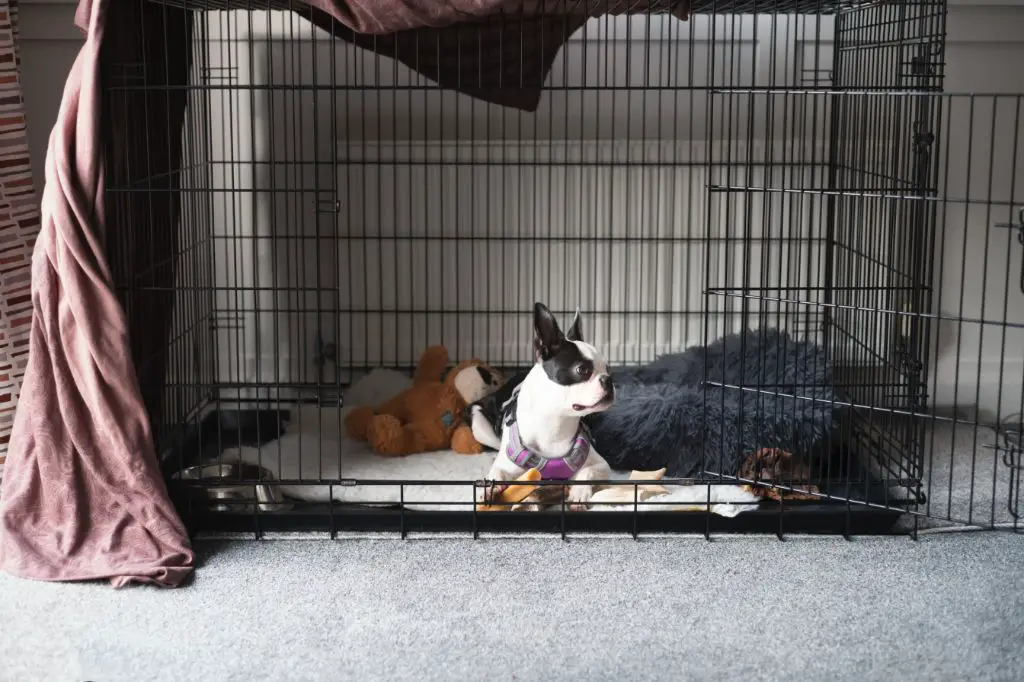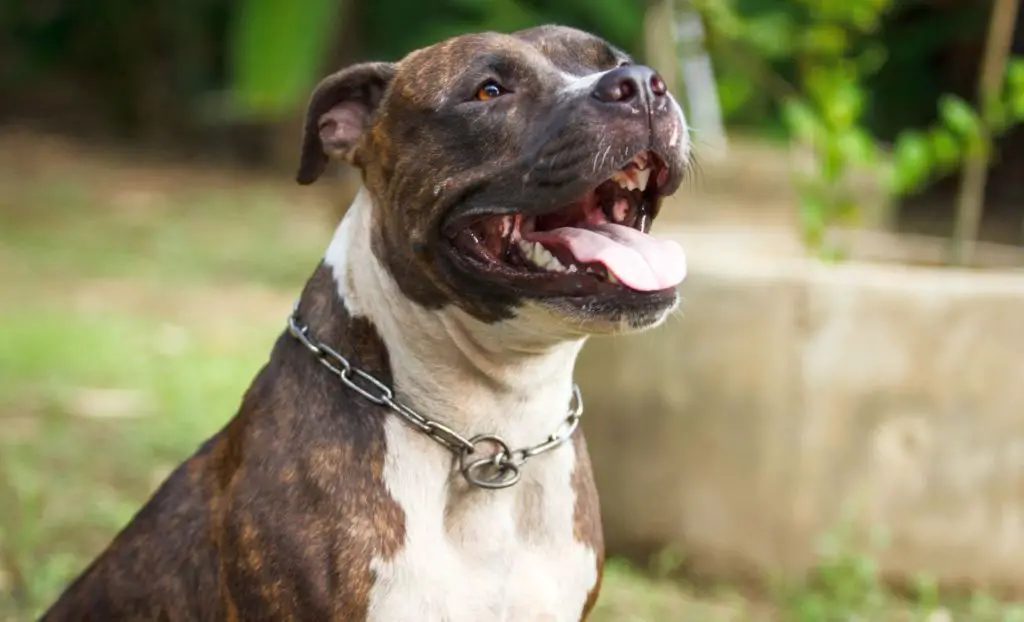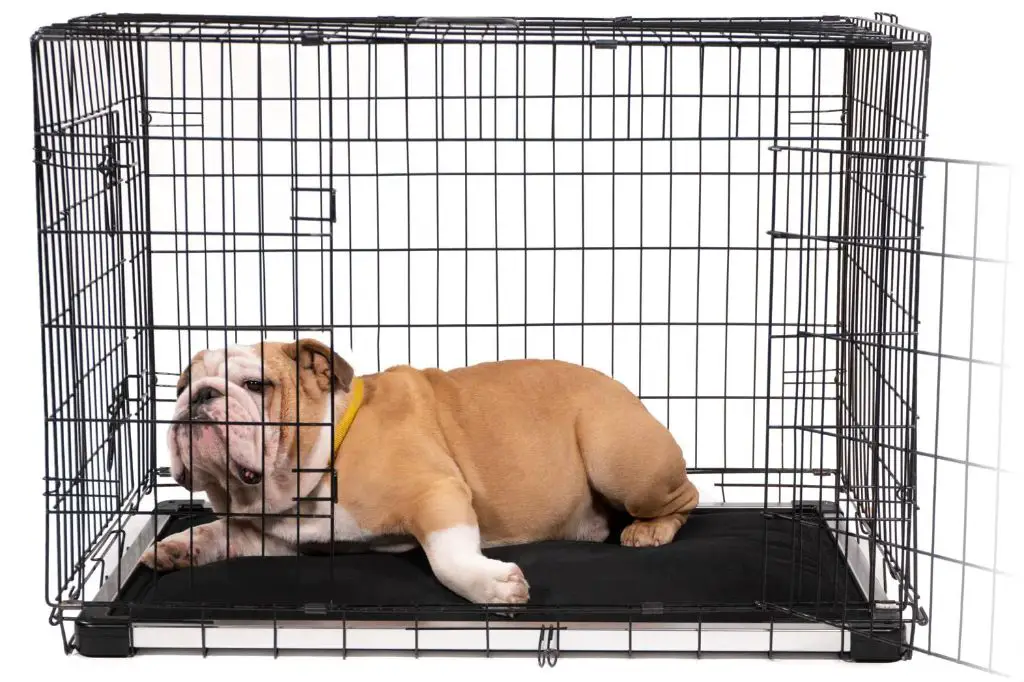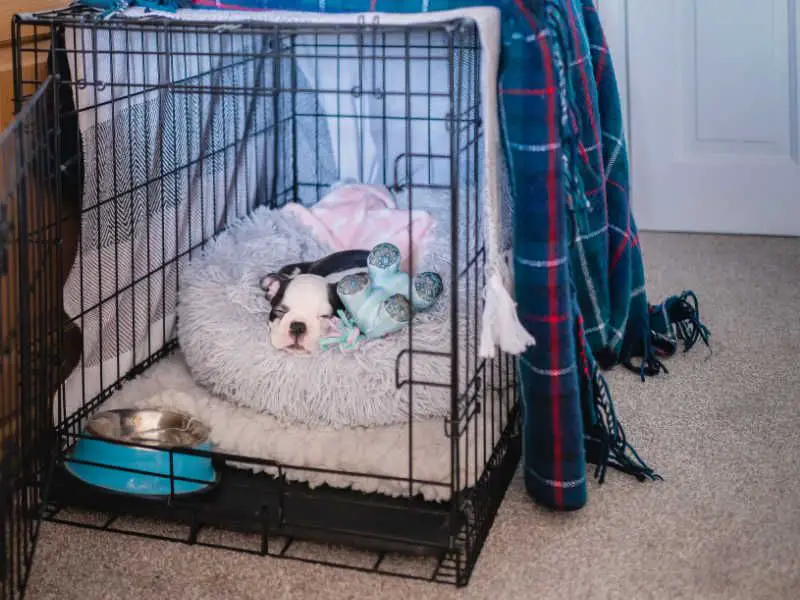Introduction
A crate can provide important comfort and security for a dog when used appropriately. For many dogs, a crate becomes a safe den-like space. Blankets are often added by owners to give the crate a more den-like feel and provide warmth. However, there are some factors to consider before deciding if covering your dog’s crate with a blanket is advisable.
There are no definitive rules about using or not using a blanket over a crate. It depends on aspects like the individual dog, its breed traits, crate location, and the type of blanket. Since safety and comfort are the main priorities, taking the time to observe your dog’s behavior with/without a blanket can help you make the best decision.
Benefits of Covering a Crate
Covering your dog’s crate with a blanket can provide comfort and warmth for your pup. The enclosed, den-like environment can have a calming effect and help your dog feel more secure and relaxed in their crate. Especially for anxious pups or breeds that like burrowing, a covered crate can mimic the cozy comfort of a den.
The blanket also helps retain your dog’s body heat, keeping them warm and insulated. This is particularly beneficial for short-haired breeds that feel cold more easily. The blanket essentially acts as a little cocoon, trapping your dog’s body warmth and protecting them from drafts or temperature fluctuations throughout the day and night.
Overall, a covered crate can create a more soothing retreat for your dog to unwind in. The physical and mental comfort it provides can lead to less stress and improved rest when crated.
Potential Downsides
While covering a crate with a blanket seems like a cozy idea, there are some potential downsides to keep in mind.
Overheating

One of the main risks of covering a dog crate with a blanket is overheating. Dogs don’t sweat like humans – they cool themselves by panting and through their paw pads. Covering the crate can prevent air flow and cause the interior to get too warm, especially for breeds that tend to run hot like bulldogs and pugs.
Watch for signs of overheating like excessive panting, drooling, restlessness, and attempt to push the blanket out of the crate. If the crate feels hot to the touch, remove the blanket immediately.
Chewing/Destruction
Some dogs, especially puppies and anxious pups, may try to chew or scratch at the blanket covering their crate. This could damage the blanket itself or even lead to the dog getting tangled in loose threads or fabric.
Only use blankets that cannot be easily destroyed and monitor the crate for any signs of damage. It’s generally safest to avoid loosely woven blankets or towels that paws and teeth can snag on.
Breed Considerations
Certain dog breeds may benefit more from having a blanket over their crate than others. This is largely determined by the length and thickness of their coat.
Short-haired breeds like Labradors, Boxers, and Pit Bulls have less insulation to keep them warm. Covering their crate can help prevent chilling, especially in cold weather or drafty rooms. Just make sure the crate has adequate ventilation.
Long-haired dogs like Golden Retrievers, Collies, and Poodles already have a built-in blanket from their thick coats. They likely won’t need an additional cover unless it’s extremely cold. Too much warmth could cause them to overheat.
Brachycephalic breeds like Pugs, Bulldogs, and Shih Tzus are prone to overheating and breathing issues. Avoid covering their crates with a blanket that could trap in heat and exacerbate respiratory problems. Opt for a crate fan or cooling mat instead.
The crate location, climate, and your dog’s unique temperament may also impact whether a blanket is appropriate. Monitor your dog’s comfort level and adjust the crate covering accordingly.

Crate Location
Where you place your dog’s crate in your home is an important consideration when deciding whether to cover it with a blanket. The room temperature where the crate is located will influence your dog’s comfort level.
If the crate is in a particularly warm spot, such as next to a heat vent or in direct sunlight, your dog may get too hot with a blanket covering their enclosure. Make sure the crate is in a relatively cool area of the house before adding any blankets that could raise the interior temperature.
Likewise, if the crate is in an especially cold area, such as a garage or enclosed porch, a blanket may help provide extra insulation and warmth. Just be cautious not to overheat your dog if they are a breed prone to heat sensitivity.
Ideally, the crate should be located in a room with a comfortable ambient temperature, where your dog will not get too hot or cold. This will allow you to adjust blankets on the crate as needed for your dog’s preferences without worrying about temperature extremes.
Type of Blanket
The type of blanket you use to cover your dog’s crate is an important consideration. Lighter blankets made from materials like fleece or cotton are good options during warmer months when your dog won’t need as much insulation. However, heavier blankets like wool or poly-fill may be better for colder weather when your dog needs more warmth.
You’ll also want to select a chew-resistant blanket if your dog is prone to chewing or clawing at bedding while in the crate. Avoid any blankets with loose threads or small pieces that could present a choking hazard if ingested. Blankets designed specifically for dog crates are available at many pet stores and online retailers. These often have reinforced seams and are made of durable, chew-proof fabrics.

In general, look for a blanket that is breathable, machine washable, and appropriate for your dog’s chewing habits and climate. This will help keep your dog comfortable when the crate is covered.
Puppy Crates
Puppies have some special considerations when it comes to covering their crates. Since puppies are still developing the ability to regulate their body temperature, you’ll want to be cautious about covering their crate too much. Puppies under 4 months old in particular may get overheated easily with a blanket over their crate, especially in warm environments.
You’ll also want to be careful about restricting airflow too much, as puppies are still developing their respiratory systems. Make sure any blanket allows for ample airflow into the crate.
Additionally, some puppies may try to chew or shred a blanket in their crate, which could be a choking hazard. Supervise your puppy at first to ensure they won’t try to eat a blanket.
If your puppy seems to get cold easily, you can put a single layer blanket over only part of the crate to allow them to move in and out of the covered area as needed.
As your puppy matures, you can increase coverage as appropriate. But for young puppies, opt for minimal, supervised coverage to prevent overheating and potential chewing hazards.
Anxious Dogs
For dogs that experience anxiety, covered crates can help create a calming “den-like” environment. This allows anxious dogs to feel more secure and relaxed. The blanket over the crate dims the stimuli from the surrounding environment and blocks out commotion that could further stress an anxious dog.
By covering a crate, it mimics the enclosed, dark space a dog would seek out in nature for shelter and sleep. The covered crate becomes a safe zone for the anxious dog. Some signs your dog may benefit from a covered crate include barking or whining when crated, panting, pacing, and destructive chewing behaviors.
When using a blanket with an anxious dog, be sure to monitor your dog’s temperature and airflow so they don’t overheat. Only use thick, opaque blankets for short periods of time, and never cover a wire crate completely. The den-like environment a covered crate provides can be very calming, but should be used carefully and properly.
Alternatives to Blankets
If you decide not to cover your dog’s crate with a blanket, there are some other options to help your dog feel comfortable and content in their crate.
Beds: Providing a soft crate bed or pad can help dogs relax and settle in their crates without covering it. Choose a bed that fits the dimensions of the crate so your dog has something soft to lay on. Washable beds are best in case of accidents.
Toys: Giving your dog a couple of safe, durable chew toys in their crate provides mental stimulation and helps relieve anxiety or boredom that could lead to whining or destructive behavior. Hard rubber toys often work well.
Treats: Peanut butter in a Kong or other chew toy can keep your dog happily occupied in their crate for hours. You can also provide longer-lasting chews for more mental stimulation.
Trying out some of these alternatives to blankets can provide comfort and entertainment for your dog without some of the risks or downsides of covering their crate.
Conclusion

When deciding whether or not to cover your dog’s crate with a blanket, there are a few key factors to consider. For most dogs, using a lightweight breathable blanket can help create a cozy, den-like environment. This is especially beneficial for anxious pups or those that are recovering from an illness/surgery and need a soothing space to rest in. However, take care not to overheat your dog – avoid heavy blankets or covering the crate fully if your dog is prone to getting hot. Additionally, be mindful of chewing/destruction tendencies, as some dogs may try to eat their blanket. Remove any blanket from puppy crates to prevent choking hazards. If your dog has separation anxiety, leaving the crate uncovered may be best so they don’t become overly anxious. Overall, using a blanket in moderation can be great for many dogs, but be sure to evaluate your individual dog’s needs and preferences.